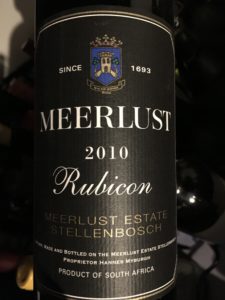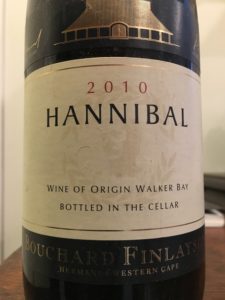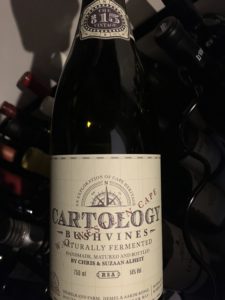As someone born and raised in the Western Cape, the heartland of South African wine, it pains me to acknowledge that the selection of wines from my home country available here in Vancouver, British Columbia, is abysmal. I’m afraid there is no other word for it. Why this is will be left for another post. However the vast majority of South Africa’s best wines – and there are now more and more superb wines emerging with every passing vintage – never make it to these shores. More’s the pity.
However, those who know my background and passion for Cape wines often ask me what wines are worth trying to source or bring back from a visit to South Africa.
The majority of Cape wines I still have in my private collection are mostly from trips I’ve made back to the country in recent years, with a few other judicious local purchases. Nevertheless, for those contemplating a visit to South Africa, or perhaps wine shopping in another jurisdiction beyond BC (Alberta comes to mind), I thought it may be worth sharing what I do have stashed away, in case you come across any of these Cape gems in your travels.
My personal selection is small but choice. Any of the following wines will give great pleasure now or in the future. These bear little relationship to the bulk-produced, basic Cape wines that clutter the BCLDB’s entirely uninspiring South African wine category shelves. The wineries represented are among the best in the Cape, both venerable old ‘First Growth’-equivalent estates and exciting newcomers alike.
First a few classic oldies:
Groot Constantia Estate Gouverneurs Reserve 2015, Constantia
This is a top Cabernet Sauvignon-led Bordeaux blend from a great vintage and the flagship wine at this, the Cape’s oldest wine estate. Groot Constantia was established in the 1660s and overlooks the Constantia Valley and False Bay, on the Cape Peninsula and just 30 minutes drive from central Cape Town. I grew up around the corner, so to speak. Its wines remain benchmarks for Constantia.
Meerlust Estate Rubicon 2010, Stellenbosch
Rubicon, a classic Bordeaux red blend, was the first of its type in South Africa, created by the late Nico Myburgh and his then winemaker Giorgio Dalla Cia. 2010 was a great vintage. Meerlust has been in the Myburgh family for eight generations. The estate was founded in the seventeenth century and its collection of elegant buildings and landscape is a national monument. I knew Nico, father of the current owner Hannes Myburgh, under whose watch this venerable estate on the banks of the Eerste River has continued to maintain its status as one of the Cape’s top estates – a Cape ‘First Growth’ equivalent if ever there was one.

Rust en Vrede Estate Cabernet Sauvignon 2013, Stellenbosch
Ex-Springbok rugby winger Jannie Engelbrecht (my schoolboy hero!) rescued this venerable Cape Dutch estate from virtual dereliction in the late 1970s, and ever since then it has been at the forefront of leading red wine estates. Its cabernet is a Cape classic.
Next some ‘newer’ wines from well-established wineries:
Rustenberg Buzzard Kloof Syrah 2015, Stellenbosch
A new wine from an old wine estate. In fact, Rustenberg has been bottling wines on the estate since 1892, so hardly a newby. But this wine is relatively new to their lineup of premium wines. Syrah was first planted in the late 1990s on the estate. Buzzard Kloof comes off a high-altitude single vineyard that is planted on one of the coolest and least sun-exposed slopes on Rustenberg, resulting in a long, late ripening process. The vineyard consistently produces one of South Africa’s most well-structured and full-bodied Syrahs.
Nederburg The Anchorman Chenin Blanc 2016, Western Cape
Another ‘new’ wine from a venerable old winery, proving the point that the entire Cape wine industry is in a state of heightened evolution towards ever-higher quality. This complex Cape Chenin from old, low-yield dryland bush vine parcels in Paarl, Durbanville and Darling was the Platinum Best South African Chenin Blanc at Decanter’s 2017 World Wine Awards in London.
Hamilton Russell Vineyards Chardonnay 2011, Hemel-en-Aarde Valley
HRV are traditional Chardonnay and Pinot Noir specialists, and consistently produce amongst the Cape’s best of these classics.
They only make two wines – one of each colour – and their stye is heavily influenced by Burgundian winemaking techniques. I plan to open this sole remaining bottle soon, and fully expect a Meursault dead ringer.
Bouchard Finlayson Hannibal 2010, Hemel-en-Aarde Valley
This is an unusual yet entirely convincing blend of several red grape varieties, from this leading winery located in the Hemel-en-Aarde (Heaven and Earth) Valley above the coastal resort town of Hermanus. Sangiovese, Pinot Noir, Nebbiolo, Mourvedre and splashes of Shiraz and Barbera combine into a unique wine in which the sum is greater than the parts. 5 Stars in Platter.

And finally some real newbies:
Crystallum Pinot Noir Peter Max 2016, Hemel-en-Aarde Ridge
Connected both geographically and personally with the foregoing wine; this is just up the valley from BF and is made by Finlayson siblings Andrew and Peter-Allen (sons of Peter, founder of the aforementioned Bouchard Finlayson). This cool-climate area is producing South Africa’s most convincing pinot noir wines.
Uva Mira The Dance Cabernet Franc 2014, Stellenbosch
This delicious wine was awarded Decanter World Wine Awards’ Platinum Best in Show trophy. From cooler vineyards high up the slopes of the Helderberg mountain overlooking False Bay. First tasted, and bought, at the winery. Sublime!
I also have a bottle of the Uva Mira O.T.V. 2014, which is a variation on the theme, and just as good: a 60% Cabernet Franc 40% Cabernet Sauvignon blend. The bold new face of Cape wine.
Alheit Vineyards Cartology 2015, Western Cape
A new Cape cult wine: this is a thrilling blend of about 86% dry farmed bush-vine Chenin Blanc and 14% Semillon, from carefully sourced vineyard parcels across the Cape that are around 40 years old. Regularly 5-star rated in the annual Platter’s Guide, and hard to find outside of South Africa. I picked up this bottle in Calgary. 2015 was particularly good for Cape whites.
So there you have it: my modest selection of some of the best wines the Cape now offers. Now the only challenge is to find any of these wines here in Vancouver.



